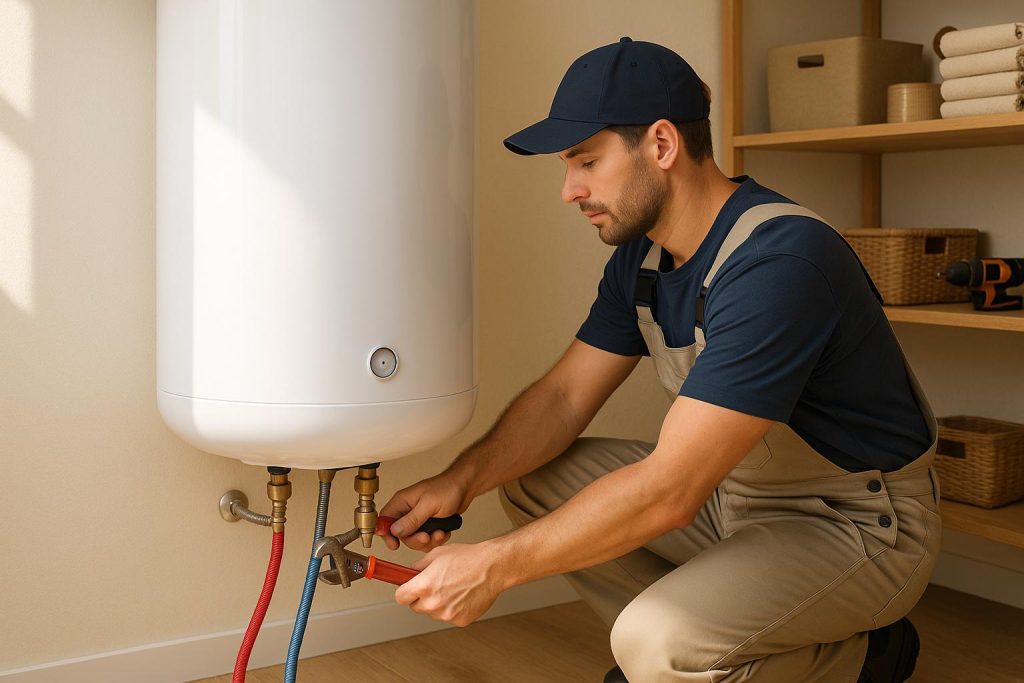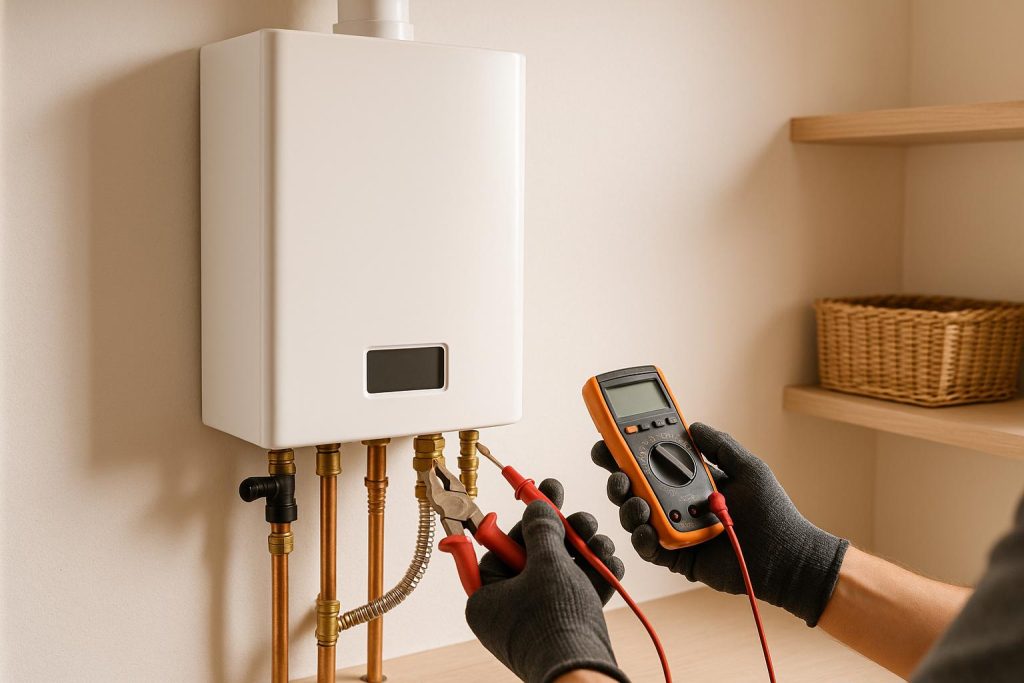
HVAC (Heating, Ventilation, and Air Conditioning) and AC (Air Conditioning) are related terms often used interchangeably, but they have distinct differences in terms of functionality and scope. Here’s a summary of the key differences between HVAC and AC:
1. Definition
- AC (Air Conditioning): AC specifically refers to systems that provide cooling and dehumidification of indoor air. It is focused on maintaining comfortable temperatures during hot weather.
- HVAC (Heating, Ventilation, and Air Conditioning): HVAC encompasses a broader range of functions. It includes heating, ventilation, and air conditioning, providing both cooling and heating to regulate indoor temperatures year-round. Additionally, it includes ventilation to ensure the proper exchange of indoor and outdoor air.
2. Components
- AC: AC systems typically consist of components like a compressor, condenser, evaporator coil, and refrigerant. Their main function is to remove heat from indoor air.
- HVAC: HVAC systems include heating components such as furnaces or heat pumps, along with cooling components like air conditioners. They also have ventilation components, such as fans and ductwork, to ensure proper air circulation and indoor air quality.
3. Purpose
- AC: Air conditioning is primarily designed for cooling indoor spaces, making them more comfortable during hot weather.
- HVAC: HVAC systems provide comprehensive climate control by offering both cooling and heating capabilities. They are suitable for year-round use and can maintain desired temperatures regardless of the season.
4. Year-Round Comfort
- AC: AC systems are mainly used seasonally during warm weather to cool indoor spaces.
- HVAC: HVAC systems offer year-round comfort by providing heating in cold seasons and cooling in hot seasons, making them versatile for various climate conditions.
5. Ventilation
- AC: Air conditioning systems typically focus solely on cooling and may not include ventilation components.
- HVAC: HVAC systems incorporate ventilation to ensure proper air exchange and circulation, which is vital for indoor air quality and comfort.
6. Scope of Application
- AC: Air conditioning is suitable for residential, commercial, and industrial settings, primarily used to combat high temperatures.
- HVAC: HVAC systems are used in various environments, including homes, offices, factories, hospitals, and more, to provide a full range of heating, cooling, and ventilation services.
HVAC vs AC

Now that we have seen the main difference between HVAC and AC, let us now look at how all of the different processes in an HVAC system work, since AC is part of HVAC
1. Air Conditioning
As I have already mentioned, air conditioning is the process of removing heat from indoor air and releasing it outside the house. I also mentioned that in order to do that, we need an indoor heat exchanger and outside heat exchanger.
There are many types of air conditioners which include:
- Central air conditioners
- Ductless/mini-splits
- Window air conditioners
- Portable air conditioners
No matter what type of air conditioner you have, the principle behind how they operate is the same. To explain how ACs work, I will use 2 of the most common types, central air and ductless ACs.
Air conditioners use a chemical with a low boiling point but high latent heat of vaporization called a refrigerant to transfer heat from inside the house to the air outside the house.
The 3 components of an AC (condenser, compressor and evaporator) are connected using copper tubes and the refrigerant is circulated between them where it changes state from gas to liquid and back to gas again as heat exchange is carried out.
Inside the house where the evaporator coil is located, a cold refrigerant liquid enters the coil as a fan is pulling hot indoor air towards it. The hot indoor air absorbs heat from the refrigerant and that is how it is cooled.
As the cooled air is circulated back to the house, the refrigerant evaporates and flows out towards the compressor.
The compressor compresses the refrigerant gas to increase its pressure, but an increase in pressure also translates to an increase in temperature.
It is important to increase the temperature of the refrigerant so that heat can flow from the refrigerant to the surrounding air.
Remember: In heat transfer, heat is transferred from a point of high concentration to a point of low concentration.
From the compressor, the refrigerant enters the condenser coil (both the condenser coil and compressor are located outside the house in one big metal cabinet).
A fan blows cooler outside air over the coil. The air absorbs heat from the refrigerant and takes it away into the surrounding air. By the time the refrigerant is exiting the coil, it will have condensed into a liquid ready to go back inside the house for more cooling.
The cycle is repeated over and over again until the house is properly cooled.
2. Heating
While air conditioning is important during the summer, heating is the homeowner’s concern during winter. There are 2 main ways to heat a house:
- Furnace
- Heat pump
Furnace

A central air conditioner is in most cases usually paired up with a furnace. Furnaces run on natural gas primarily, but they could also use propane or oil.
Cold air from the house is pulled to the furnace using return air ducts and after heating the heated air is supplied using the supply air ducts. The indoor temperature is monitored using a thermostat.
Heating starts when the thermostat signals the furnace to kick in. An electronic ignition starts the burner component inside the combustion chamber.
The flames from the burner component then heat a metal heat exchanger. The heat generated circulates through the looped tubes of the heat exchanger. As the air moves across the tubes, it absorbs heat from the heat exchanger and that is how it gets heated.
Heat Pump
A heat pump can cool and heat the house. When used to cool the house, a heat pump works exactly like and air conditioner. As a matter of fact, it is hard to tell a heat pump from an AC by just looking at them. Just like in air conditioning, there are 3 main types of heat pumps:
- Central air – One unit outside and another outside which heats the whole house to the same temperature. This can be fixed using HVAC zoning systems.
- Ductless/split system – One outside unit and several inside unit. Each room can be heated/cooled a temperature different from the other.
- Packaged units. All the components (condenser, evaporator and compressor) are housed in one big metal cabinet installed outside the house and connected to the ductwork directly.

Heat pumps works (when used to heat) by extracting heat from the outside air. Even when the outside air is really cold, it still has thermal energy which can be extracted and used to heat the house.
Heat pumps have a device called a reversing valve which reverses the direction of flow of the refrigerant during heating operations. As such, a very cold refrigerant enters the condenser coil outside the house.
Since it will be way colder that the outside air, heat will be transferred from the air to the refrigerant. Because refrigerants have a low boiling point, it will evaporate and enter the compressor in gas state.
The compressor will compress the gas which will also increase its temperature. A high-pressure superheated gas therefore enters the evaporator coil inside the house. The indoor air absorbs heat from the refrigerant which is then circulated throughout the house. That is how heat pumps heat the house
3. Ventilation
Ventilation is basically the process of removing stale air from a space and intentionally replacing it with fresh outdoor air. Activities such as breathing, washing, cleaning, showering, cooking etc. make the indoor stale, saturates it with particles and also increases humidity.
Ventilation therefore makes sure that this air is constantly being replaced with outside fresh air. That prevents you from becoming ill or even mold/mildew from growing indoors/ There are 2 types of ventilation:
- Natural ventilation
- Mechanical ventilation
Natural ventilation is when exchange of air between the inside space and outdoors happen naturally. This includes opening windows or doors to the space which allows “communication” with the outdoors.
Mechanical ventilation is when air is forced out and inside a space. This process is then one mainly used in HVAC.
Opening windows might work but they reduce the efficiency of your air conditioner during summer and your heating during winter.
HVAC systems have vents and fans which bring in outside air inside the house and also remove stale air to the outside. Due to the ductwork network, ventilation in central air conditioning is way better than that in ductless/split systems.
Wrap Up
And that is how HVAC is different from AC. I hope that this guide was helpful and that it left you with no gaps in as far as HVAC and air conditioning is concerned.





